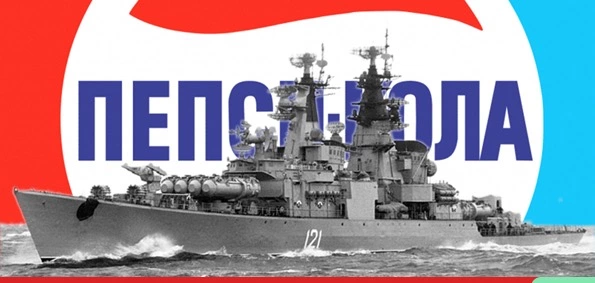PepsiCo Inc., the international food and beverage conglomerate behind Pepsi cola, is said to have struck a deal with the Soviet Union in 1989 to get a large fleet of submarines and warships. Coca-Cola had to be frightened. Pepsico’s arrangement with the Soviets comprised 17 submarines, each costing $150,000, as well as a cruiser, frigate, and destroyer, according to a New York Times article at the time.
The weird story of Pepsi wanting to buy a fleet of Soviet submarines is strongly linked to the declining USSR’s grave troubles in the late 1980s. In a last-ditch effort to breathe new life into the stagnant economy, Soviet leader Mikhail Gorbachev pushed through a series of “Perestroika” changes aimed at encouraging business and expanding free trade, enabling more engagement with Western capitalism. Meanwhile, Pepsico was competing with Coca-Cola for soda dominance and was eager to do business with Moscow in order to get a foothold in this booming consumer market. They already had 21 bottling operations in the Soviet Union, but wanted to build another 26.
There was just one problem: a lack of funds. It was difficult to move money in and out of the Soviet Union since the ruble was not globally convertible. Using tangible things as a medium of exchange was one approach to get around this. As a result, when Pepsico and Moscow reached an agreement, the company decided to collect its earnings in the form of Soviet-built ships.
As you can think, there was a lot of vodka involved in the deal. According to the Washington Post in 1990, Pepsico received exclusive distribution rights for Stolichnaya vodka in the United States, as well as permission to build two Pizza Hut locations in Moscow, which were owned by Pepsico at the time. Gorbachev also appeared in a Pizza Hut ad in 1998, which may have been a coincidence (video above).
This acquisition was widely claimed to give Pepsico the “sixth-largest navy” in the world at the time, with a squadron of 17 submarines and a handful of battleships. As intriguing as that narrative is, calling this flotilla a naval force would be a stretch. This group of Pepsi-Soviet warships has clearly outlived its usefulness. The submarines and ships were to be scrapped and presumably included ancient, corroded equipment that the Soviets didn’t mind losing.
However, there is some dispute as to whether the purchase went through in the end. According to a 1992 article in the Los Angeles Times, the Pepsico-Soviet deal effectively fell apart when the Soviet Union was disbanded, and the plan was never fully realized, though there may have been some “barter” arrangements of cola syrup for Soviet ships at some point during the brief partnership.
Furthermore, according to a video by History Matters (without citing a source), all demolished Soviet ships have been accounted for, and the agreement ended up with the USSR essentially manufacturing freight ships for Pepsi. Regardless, it appears that Pepsi felt confident in their version of events. “We’re disarming the Soviet Union quicker than you are,” Pepsico CEO Donald M. Kendall reportedly told a US President George Bush Senior national security advisor.
















